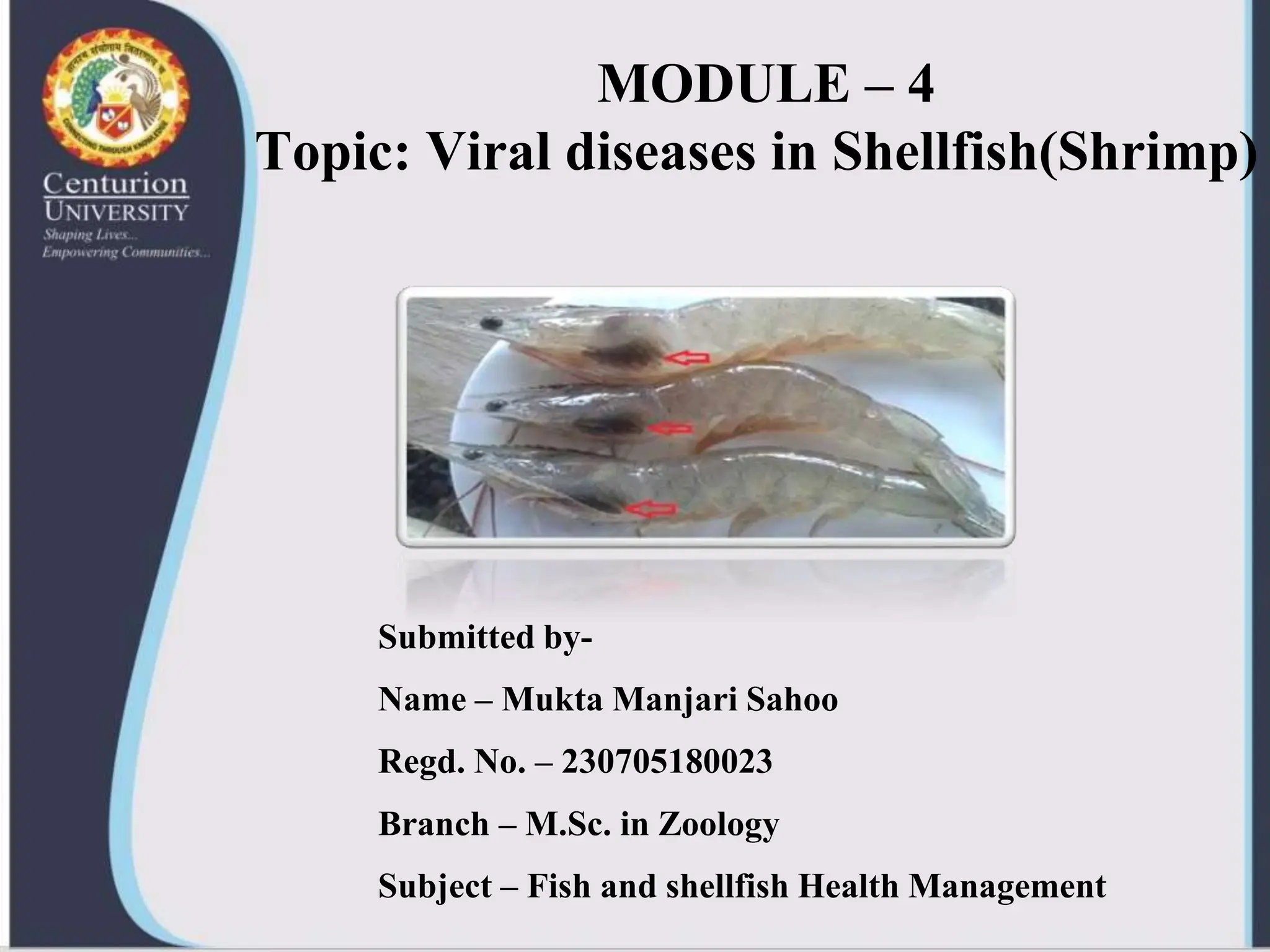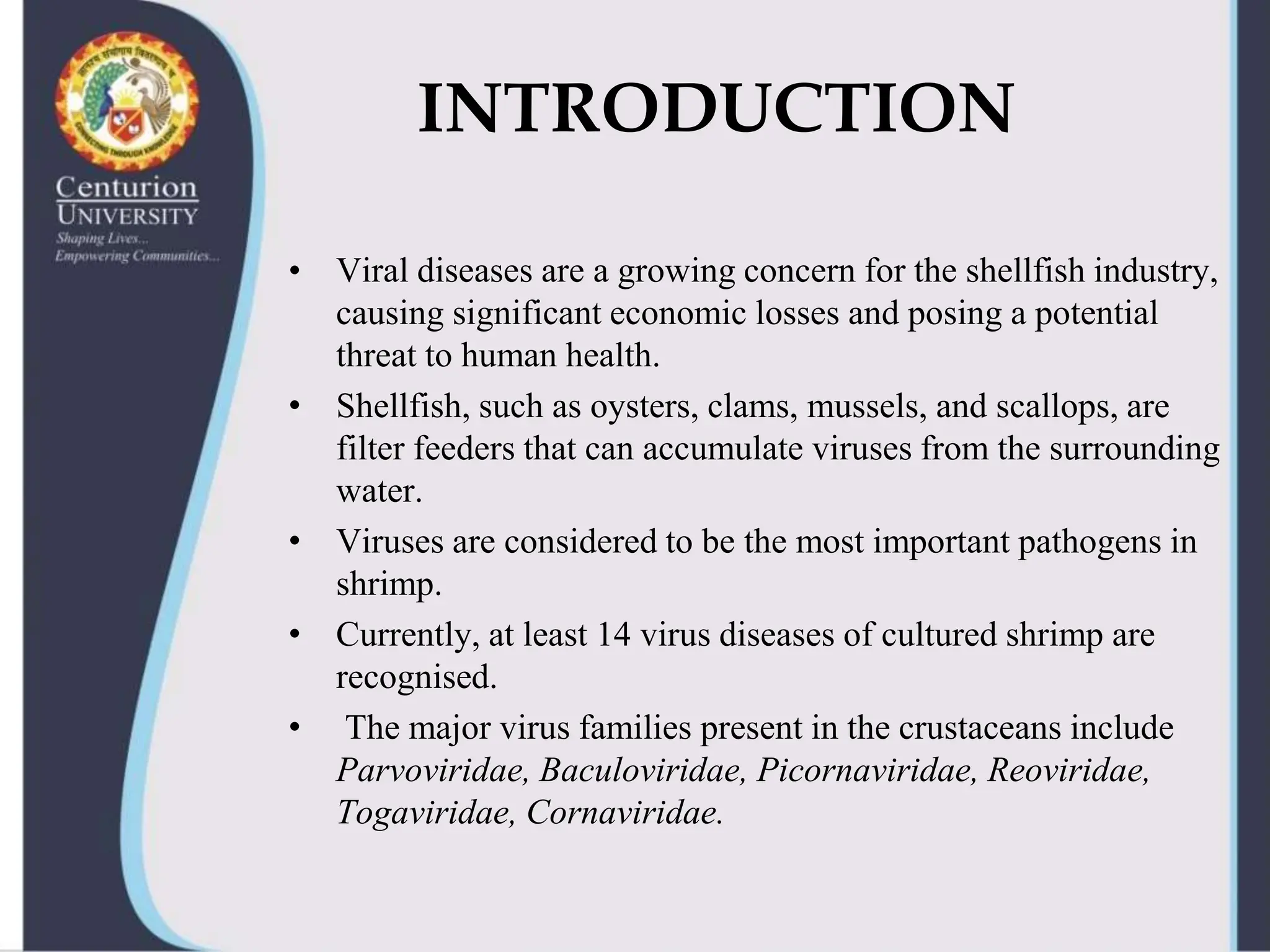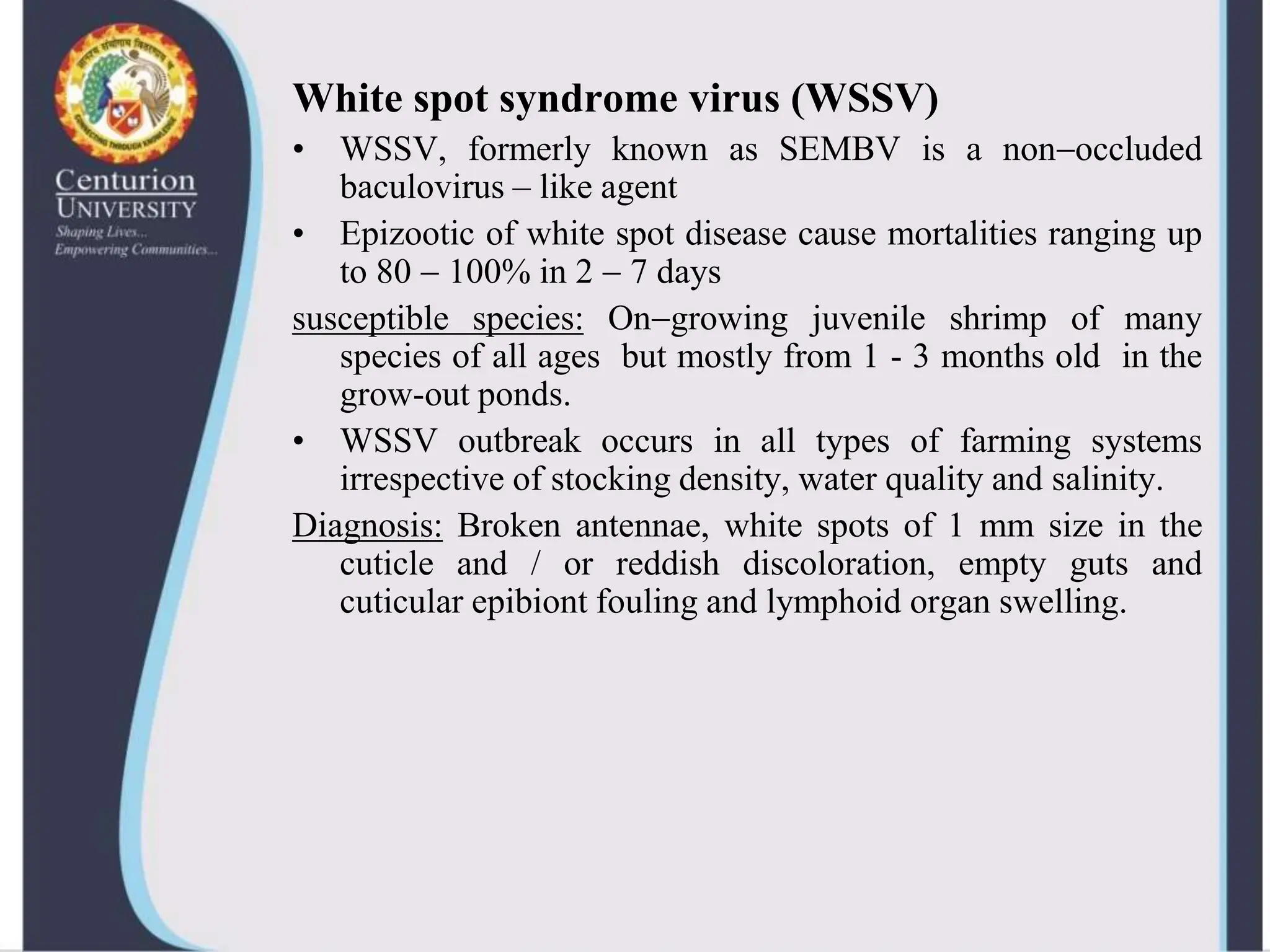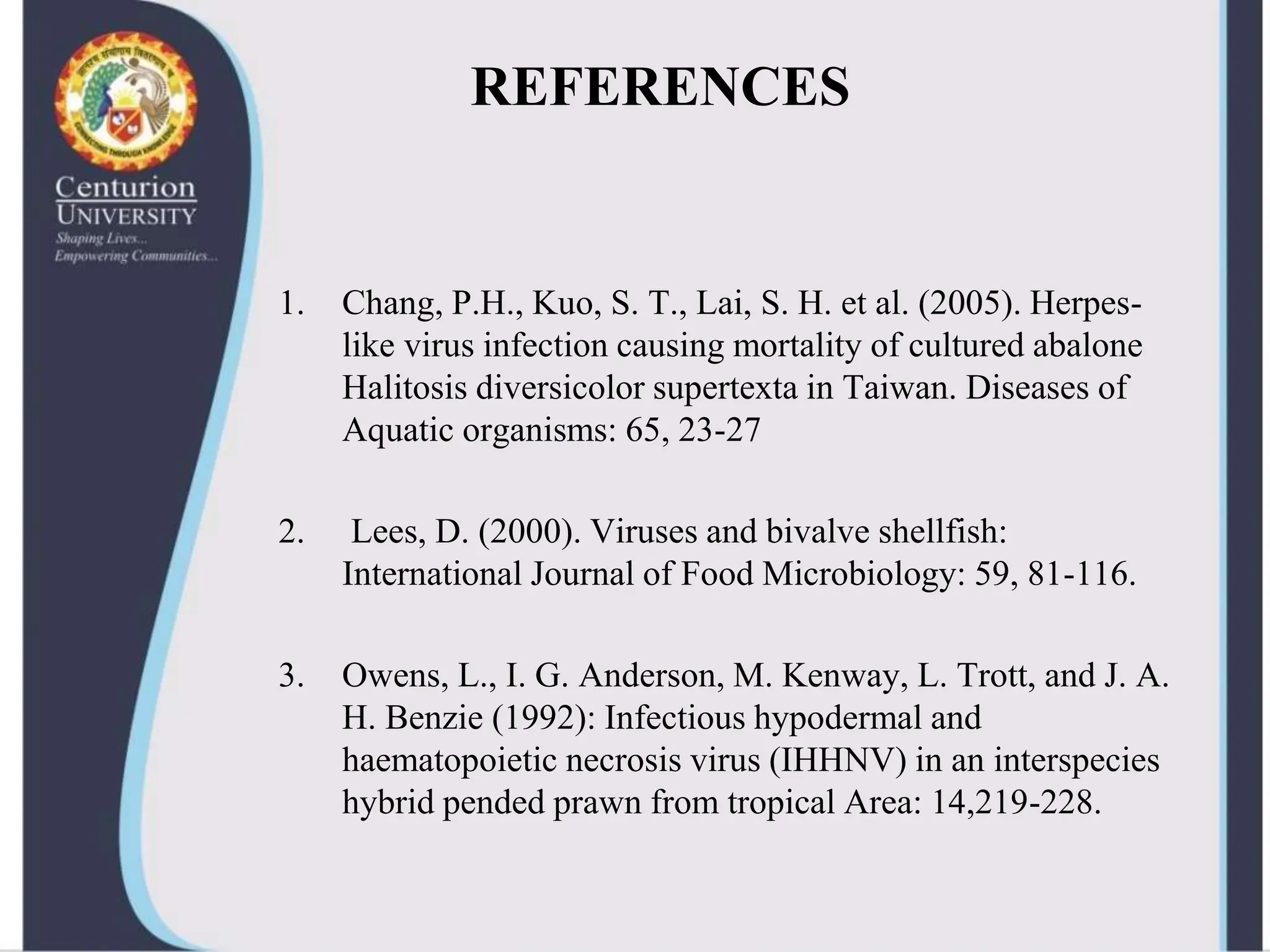The document discusses viral diseases affecting shrimp and the shellfish industry, emphasizing their economic impact and potential health risks. Key viruses such as Hepatopancreatic Parvo-like Virus (HPV), Infectious Hypodermal and Hematopoietic Necrosis Virus (IHHNV), and White Spot Syndrome Virus (WSSV) are highlighted, along with their symptoms, transmission, and diagnostic methods. Prevention strategies include using clean, pathogen-free water, specific pathogen-free shrimp, and maintaining good biosecurity and water quality.















